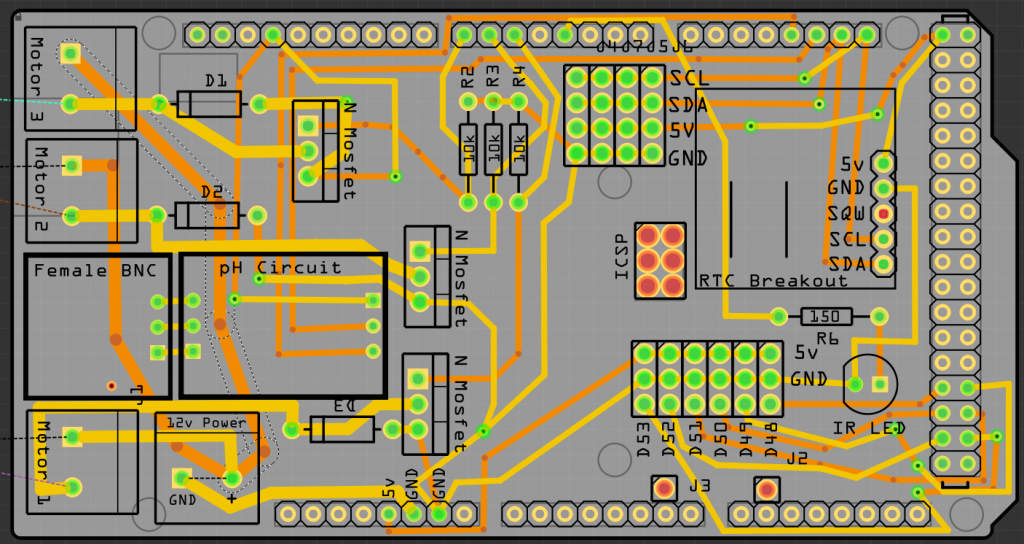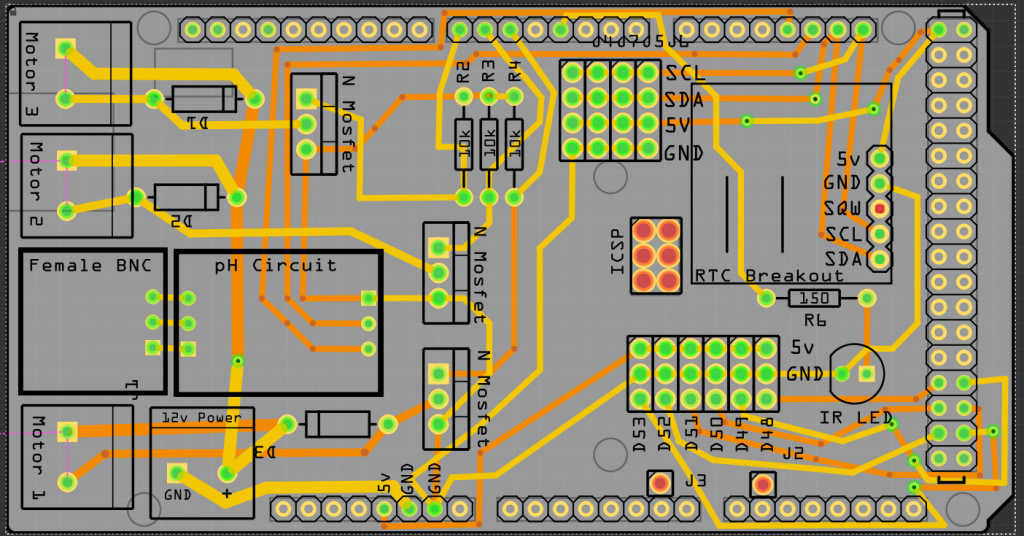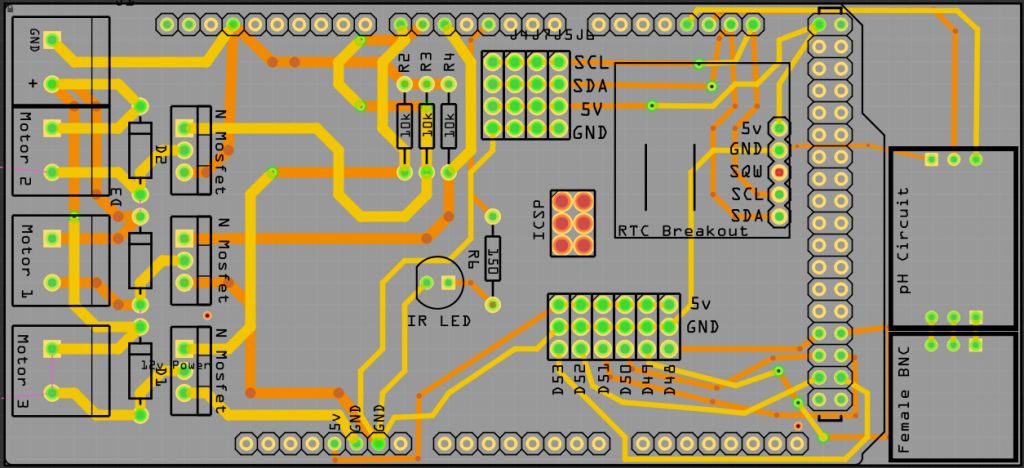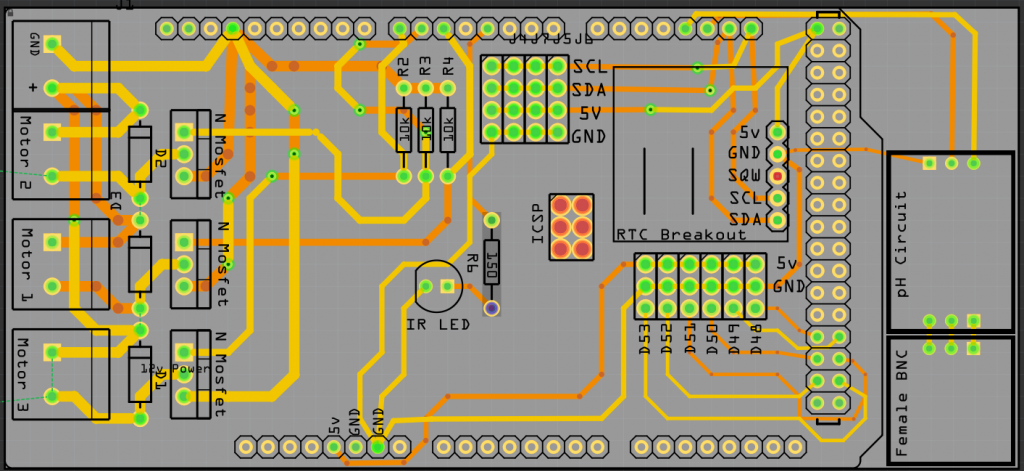- Thu Jul 17, 2014 4:18 pm
#172776
Hi guys, first off I just want to thank anyone who takes a look at this and provides any assistance. It really is greatly appreciated.
I'm trying to make a custom Arduino Mega Shield to control my aquarium, including running some peristaltic pumps. I think I have almost everything setup right, but I am not sure if the diodes running from the screw terminals where the the motors connect are correct. Are they backwards? Can anyone give me some insight? You can download the fritzing file here: https://www.dropbox.com/s/suu31k4vy3s1q ... quatic.fzz
if you don't want to download it, maybe this picture will be enough:
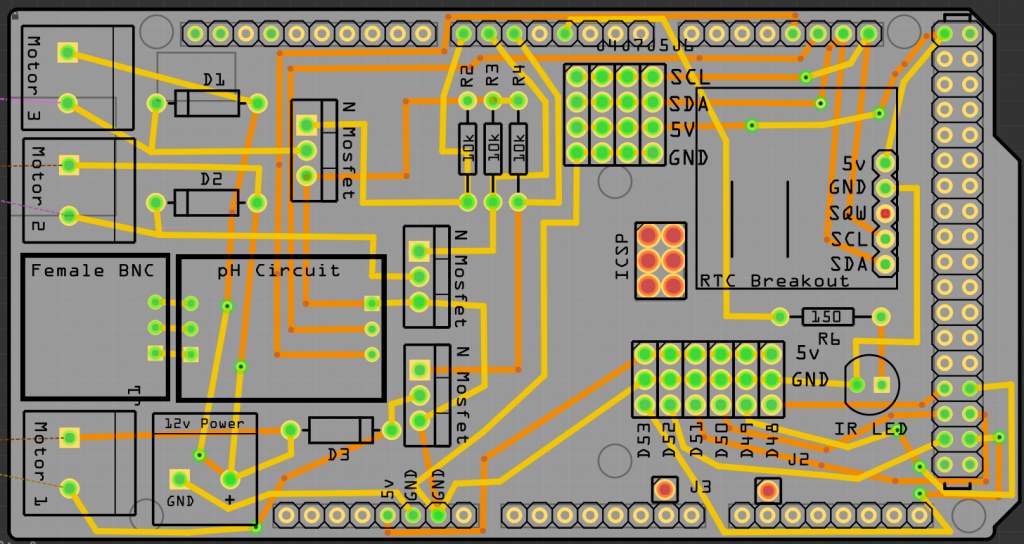
I'm trying to make a custom Arduino Mega Shield to control my aquarium, including running some peristaltic pumps. I think I have almost everything setup right, but I am not sure if the diodes running from the screw terminals where the the motors connect are correct. Are they backwards? Can anyone give me some insight? You can download the fritzing file here: https://www.dropbox.com/s/suu31k4vy3s1q ... quatic.fzz
if you don't want to download it, maybe this picture will be enough:


